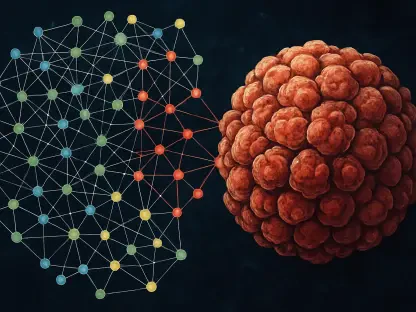In a significant development in avian flu research, scientists from the University of Pittsburgh and the NIH Vaccine Research Center have crafted an innovative antibody therapy aimed at tackling the severe H5N1 avian flu virus in monkeys. This new therapy focuses on a broadly neutralizing antibody, targeting a stable region of the virus, making it a crucial breakthrough for maintaining immune defense despite the virus’s mutation capabilities. By targeting less mutation-prone regions, this novel treatment retains its efficacy over time, offering vital protection even as the virus continues to evolve.
Importance of Broadly Neutralizing Antibodies
Targeting Stable Regions to Ensure Long-Lasting Efficacy
One of the most groundbreaking aspects of this research lies in the discovery and development of an antibody that targets a stable region of the H5N1 virus. Unlike traditional antibodies that often target areas where mutations frequently occur, this new antibody homes in on regions that remain relatively unchanged. This stability is instrumental in maintaining the antibody’s efficacy even as the H5N1 virus undergoes mutations. This approach echoes the immune adaptability strategies witnessed during the COVID-19 pandemic with SARS-CoV-2.
By focusing on these stable regions, the researchers have found a way to provide durable protection against a virus known for its ability to mutate. This innovation not only boosts the potential for long-term immunity but also makes this therapy a cornerstone in efforts to curb the global spread of H5N1. Preliminary tests revealed that the antibody performed exceptionally well, serving as a potential prophylactic measure for those at high risk or in vulnerable populations. Additionally, the broad nature of this antibody’s protection establishes a benchmark for the desired antibody levels in blood, offering useful insights for developing a universal flu vaccine.
Addressing the Current Threat and Broader Implications
The urgency of this development is underscored by the global threat posed by H5N1. As of January 2025, the World Health Organization documented over 950 cases with a staggering fatality rate of over 50% since 1997. While the United States has only recorded one death, the virus continues to adapt, posing a potential risk for broader outbreaks. Cases of H5N1 among livestock in the U.S. and mammals globally highlight the virus’s increasing transmission capabilities and its potential to cross species barriers, making the need for effective preventative measures more critical than ever.
The development of this antibody not only addresses the immediate threat posed by H5N1 but also highlights the importance of prepared and robust response mechanisms for future pandemics. By leveraging stable structural regions of the virus, researchers can fortify immune defenses more effectively, ensuring that new strains or mutations do not compromise the protection these antibodies provide. This approach could significantly improve our ability to handle not only current threats but also potential future outbreaks, thus safeguarding public health on a global scale.
Achievements and Future Prospects of Researchers
Success in Animal Model Simulations and Importance of Aerosol Exposure Studies
Researchers at the University of Pittsburgh have been at the forefront of developing and testing vaccines and protective antibodies in animal models that closely mimic human physiology. A 2023 study published in iScience refined an aerosol monkey model that replicates severe human H5N1 infections. This study underscored the importance of aerosol exposure in the disease’s severity, providing valuable insights into transmission dynamics and pathways.
The refinement of the aerosol model was a significant milestone, as it allowed researchers to better understand how the virus spreads and infects hosts. This understanding is crucial for developing effective countermeasures. The success of the broadly neutralizing antibody MEDI8852 in this model was a breakthrough, demonstrating universal protection against severe disease and death in monkeys pre-treated with the antibody. The study also determined the minimum serum concentration required for protection, offering a critical threshold for assessing the immune response needed for effective prevention.
Implications for Universal Flu Vaccines and Pandemic Preparedness
The study’s findings are not just important for immediate protection against H5N1 but also have broader implications for the development of a universal flu vaccine. By establishing the protective threshold, researchers have paved the way for future vaccine development that could offer broad protection against multiple influenza strains. This is particularly significant given the influenza virus’s ability to adapt quickly, necessitating frequent updates to seasonal flu vaccines.
The stability of serum levels of the MEDI8852 antibody over 8 to 12 weeks suggests that early administration could provide timely protection for first responders and caregivers during an H5N1 outbreak. This is a critical consideration for pandemic preparedness, as timely protection for those on the front lines can significantly reduce the spread and impact of the virus.
Collaborative Efforts and Significant Contributions
Role of Multidisciplinary Teams in Advancing Research
This groundbreaking research was a collaborative effort, with contributions from experts at the NIH Vaccine Research Center, University of Pittsburgh, UPMC, University of Georgia, and AstraZeneca. The study published in the journal Science emphasizes the importance of interdisciplinary collaboration in advancing medical research and developing robust countermeasures against pandemics.
The involvement of multiple institutions and specialists underscores the complexity of addressing emerging infectious diseases and the necessity for comprehensive approaches. Each institution brought unique expertise to the table, from virology and immunology to clinical research and pharmaceutical development. This collaborative framework not only accelerated the research process but also ensured that various aspects of the problem were addressed, resulting in a more holistic and effective solution.
The Path Forward and Ongoing Research Efforts
In a notable breakthrough in avian flu research, scientists from the University of Pittsburgh, along with collaborators from the NIH Vaccine Research Center, have developed an innovative antibody therapy to combat the H5N1 avian flu virus in monkeys. This pioneering treatment zeroes in on a broadly neutralizing antibody, which targets a stable region of the virus, representing a significant advancement in sustaining immune defense even as the virus mutates. By concentrating on regions of the virus that are less prone to mutation, this new method ensures its effectiveness over time, providing crucial protection despite the virus’s ongoing evolution. The team’s approach alleviates concerns about the virus’s ability to dodge immune systems through mutation. This therapy could pave the way for more resilient flu treatments, reducing the risk of widespread outbreaks and enhancing public health. Consequently, this development might represent a potential paradigm shift in how scientists approach flu virus treatment in the future.









